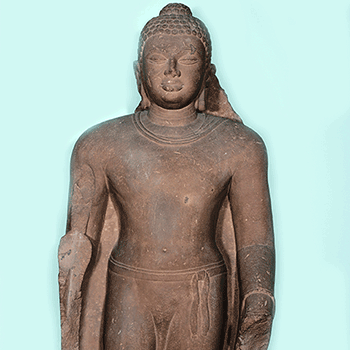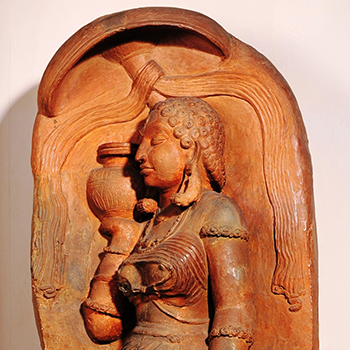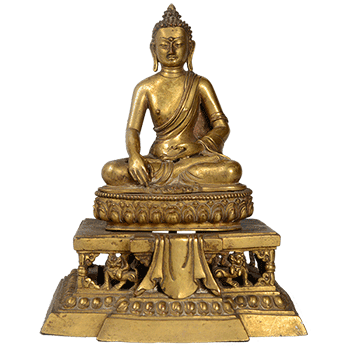This peaceful looking sculpture of Buddha was originally from Sarnath, Banaras, Uttar Pradesh. It belongs to the Gupta dynasty which dates it back to 5 CE. It is made of stone and stands tall with a height of 91.10cm and a width of 30-12x It is currently placed at the Gupta gallery in the National Museum, New Delhi.

























